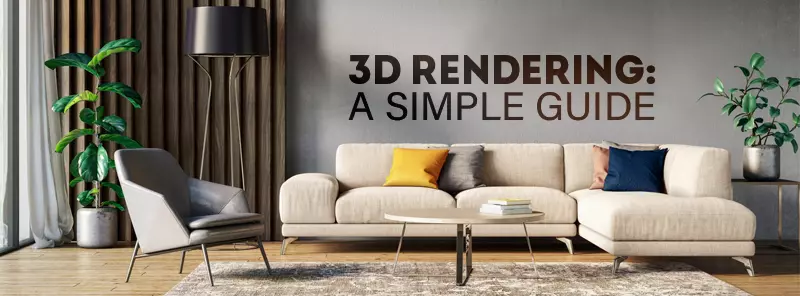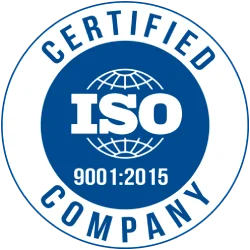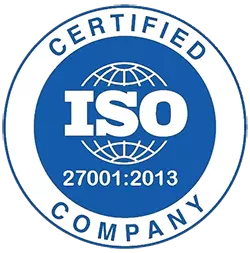What is 3D Rendering? Definition, Overview, Types and Uses

With the spectacular advancement of 3D technology, we have seen a significant surge in 3D rendering and its applications in various industries. This wide usage is primarily because of the versatility and flexibility 3D rendering offers and the kind of ultra-realistic outcomes they generate.
What is 3D Rendering?
3D rendering is the process of generating a 2D image or video from a 3D model using a software program. It is the final step in the 3D design process. 3D-rendered images include photorealistic or non-photorealistic effects. This render is about the colour, texture, lighting, or material of an object depicted in the three-dimensional model or scene. 3D rendering is important for increasing creativity and producing realistic visuals. It helps with cost reductions, increased communication, and innovation across different industries.
Types of 3D Rendering
There are two main types of 3D renderings - realistic and non-realistic.
-
Realistic 3D rendering
These renders are usually done for elements found in the real world. In this type of rendering, the models are developed using the right texture, shadows, and lighting, just as it is in the real-life environment. As a result, the rendered images look hyper-natural. Such as the architectural interior of a building or a rendered image of furniture or a car.
-
Non-realistic 3D rendering
In this type, the developer creates an object they have no prior idea about, like information on the height, texture, or any other parameters. It is like creating a thing out of thin air, converting unusual art forms into life-like objects. This type is mainly seen in comics, animated movies, video games, etc., where the imagination of the concept designer knows no bounds.
Detailed Article : Different Types of 3D Rendering Techniques Used by Professionals
Process of 3D Rendering
The 3D rendering steps may differ based on the software used, the person executing the process, as well as the desired objectives.
However, no matter the alterations in the sequence of the steps, a 3D rendering process always has two distinct phases - the pre-rendering phase, which includes conceptualizing, developing, and prepping the 3D model. And the rendering process itself, which includes the actual 3D rendering refers to transforming the model into a 2D representation. Here are the steps involved in the 3D rendering process.
- Create or import 3D models using 3D modeling software.
- Set up the scene by positioning the camera, lights, and any other elements.
- Apply materials and textures to 3D models.
- Add lighting.
- Adjust the camera settings.
- Configure rendering settings like resolution, aspect ratio, and quality.
- Initiate the rendering process and generate 2D images.
- Post-Processing.
Let’s break down the pre-rendering phase for you
-
Conceptualization
This is the initial conceptualization phase, where the visions and goals are discussed. These metrics mainly depend upon the brand for which the rendering project is being done, its brand values, target audience, target market, and user behavior. The client and the creative director both sit and discuss the visions together. This helps in envisioning the final deliverable.
-
Analysis and design
Once the concept is approved, the project analysis begins. This includes determining the parameters, viz, environment, camera angles, texture, lighting, etc., that the end model must have.
-
3D modeling
Then comes the 3D modeling part, wherein the modeler creates a 3D model of the object. The process essentially involves manipulating vertices or points to form a 3D polygon mesh. Once the 3D artist and the client are satisfied with the model, the next crucial process of rendering can be commenced.
Useful article : What is the Difference Between 3D Modeling and 3D Rendering?
The rendering phase
To start with the 3D rendering phase, various key components and tools are required. Check out this list below.
- 3D modeling software to import 3D models.
- 3D models of the objects, scenes, or environments.
- Materials and textures like colors, patterns, etc.
- Lighting.
- Virtual Cameras.
- Rendering Engine.
- Suitable computer hardware.
- Post-Processing software.
- Knowledge and skill.
This stage is immensely vital in bringing the 3D object to life. It includes the addition of the following.
-
Materials and texture
The 3D designer needs to manipulate the material settings of the object to give it a realistically rendered appearance. The material can be glossy plastic, a leathery finish, a woven, or a matte surface. Considering the material, the texture elements are added. Accurately depicting the object’s material is highly important to bring realism.
Useful resource : How to Create 3D Textures Using Simple Tips
-
Lighting
The success and quality of any 3D render depend mainly on the proper lighting and shadows. By using proper lighting techniques, we can get evenly balanced shadows and reflections that give depth to 3D models, making them appear natural to the human eye. Understanding the physics of light and shadow is the key to mastering this stage and making the models look highly realistic.
-
Additional details
Once the texturing and lighting are done, the 3D artist adds some more details, like digital sculpting, to make the model’s form as lifelike as possible.
-
Feedback and refining
Here, the creative director considers the inputs of the client and checks for any further refinement required before making the final delivery. The 3D artist then makes those fine-tunings and processes for the delivery.
-
The final delivery
Once the iterations are made, this is the last step of the 3D rendering process. The client receives the final image in a specific format and resolution depending on its application, whether the image will be utilized in a game, for print purposes, or on the web, in a film or a video, etc.
Hardware and Software for 3D Rendering
- CPU: Powerful CPU (e.g., Core i5 with 4.0 GHz base)
- RAM: 8GB - 32GB for different applications
- GPU: Higher version GPU (e.g., NVIDIA GTX 1060)
- Software: Competent in materials, lighting, shading, texture-mapping, and real-time scene exploration.
- High-speed Internet: Essential for seamless application use and cloud storage.
Tips to Speed Up 3D Rendering
- Keep old project files for repurposing.
- Utilize 2D/3D CAD files to save time.
- Render during off-hours to save time.
- Use simplified object display for smoother viewport performance.
- Consider partnering with third-party agencies for faster turnarounds.
Benefits of 3D Rendering
- Accurate visual representation increases sales.
- Balanced lighting and shadow enhance images.
- Realistic architectural renderings for real estate.
- Quick representation of abstract concepts.
- Fast design changes with minimal costs.
- Multiple-angle views benefit architects and engineers.
- Cost-effective compared to photo studios.
Useful resource : Benefits of 3D Rendering for Furniture Industry
Applications of 3D Rendering
3D rendering has vast and numerous applications in various industries. Here is the list of some of the applications.
-
Architecture
In the world of digitization, architectural rendering has become more popular than ever. It has revolutionized the way architects design, creating stunning visuals and bringing their design ideas to life. They use 3D rendering to showcase their projects by presenting materials, lighting, textures, and spatial arrangements in a realistic manner.
The major benefits of architectural rendering are:
- Designs are more accurate.
- Identifying potential errors at an early stage.
- Easily communicate your design ideas with clients and stakeholders.
Useful Resource : How Real Estate Sector Benefits From Architectural Visualization?
-
Manufacturing
Product rendering is essential to showcasing the products' appearance, materials, textures, and other finishes. It is very helpful for businesses to present their products in a photorealistic manner. By demonstrating the products, customers can get a sense of the visual appeal of the products before they are manufactured. It is widely used in product catalogues, print ads, and e-commerce platforms to create, customize and modify the prototypes that encourage customers to make informed decisions.
The major benefits are:
- Tme-consuming and cost-effective
- Eliminate the errors before the development stage.
- Increase customer satisfaction and sales value.
Useful Resource : Why is 3D Modeling Important for Product Manufacturing Industry?
-
Video games
Character rendering plays a bigger part in the world of animation, gaming, and visual effects. Artists use this rendering technique to create animated characters. The rendering involves everything from modeling to rigging, lifelike characters. As a result, video games, part of 3D rendering, allow you to explore new horizons, captivating new worlds with your game character.
-
Marketing and advertising
When it comes to business, marketing and advertising, play a major role. 3D rendering has enchanted viewers for a long time in the industry, from photographs to video promotions. Likewise, more videos and images are posted on social media platforms, captivating a larger number of new clients. Further, it allows for more elaborate, realistic advertisements and enables businesses to promote their products and engage potential buyers.
Useful Resource : Types of 3D Renderings Used for Online Product Marketing
-
Healthcare
3D rendering has massively increased in the healthcare industry. Healthcare professionals are using 3D rendering for everything from crowns for the teeth to mapping the anatomy and repairing the body parts. In addition, they are using it to educate the students, practice themselves, and diagnose the details before the surgery. This gives confidence to the doctors, who can also analyze the operation procedures beforehand. Above all, 3D rendering technology also aids in designing medical equipment like stethoscopes, syringes, and thermometers.
Advancements in 3D rendering technology
-
Cloud-based 3D rendering
Cloud-based rendering is the process of rendering the models using external servers. You only want to upload your design to the Clod-compatible server using the CAD program. Then the computer will automatically generate the desired images for you. One of the major advantages of cloud-based rendering is that you can quickly render your projects using parallel processing. Not only can you render images quickly, but you can also free up your PC for other tasks to be completed while rendering. Thus, harnessing the power of cloud-based rendering, as it has become incredibly affordable, and one can conclude projects in a faster and simpler way.
-
VR and AR technology in 3D rendering
As technology advances, VR and AR are emerging in various fields. These technologies convert three-dimensional images into two-dimensional images by the 3D rendering method. There are a variety of 3D rendering methods available to create immersive and realistic experiences. Through this, consumers can get an instant impression of the models, making them feel like they live in a virtual environment. One of the major benefits of these technologies is that they enable users to add additional details like rendering shadows, reflections, and surface textures to provide three-dimensional visual experiences. As a result, stakeholders are using VR and AR technologies, through which 3D rendering opens up future possibilities to visualize the concepts, evaluate the designs, and thus increase the overall efficiency.
Useful Resource : 3D Architectural Rendering: Top 7 Popular Trends and Advancements
Over to you now!
If you have reached until this point, you have got a fair idea of all about 3D rendering, how to quicken your 3D rendering workflow, and what great benefits various industries can reap by utilizing it. So if all is set, gear up and start exploring 3D visualizations, and get your clients or your business realistic 3D rendered product models.
And in the process, if you need any help or assistance, reach out to an expert professional agency that can get you high-quality 3D lifestyle rendered shots.
Contact Us
Frequently Asked Questions (FAQ)
The main difference between real-time rendering and traditional rendering is the amount of time it takes to render a single frame. In this case, traditional rendering produces highly finished products but is time-consuming and limited in terms of interactivity. In comparison, real-time rendering takes less time than traditional rendering to render a single frame and is usually measured in frames per second (fps). It creates more interactive and dynamic visuals.
In general, rendering resolution refers to the total number of pixels per unit area needed to compose an image. The unit of resolution is measured in dpi (points per inch), lpi (lines per inch), ppi (pixels per inch), etc. This is essential to render the image when it looks blurred and spot some squares. One of the primary uses of rendering resolution is that the higher the resolution, the more pixels it contains, thus giving more detailed images on the screen.
For example, in most cases, a good resolution requires 720*480 pixels, and if you want to go further, choose 2000*1500 pixels, where 2000 refers to the pixel width, and 1500 refers to the pixel height. Thus, high resolution plays a vital role in rendering good-quality images.

